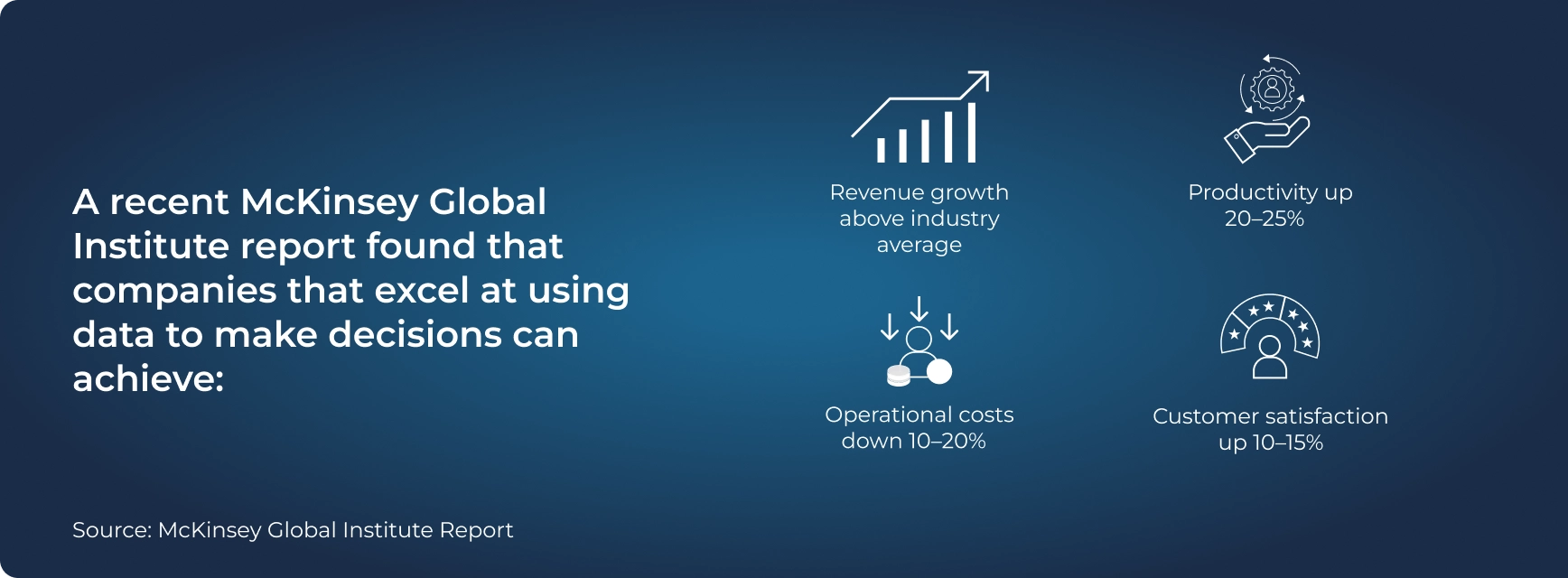Real-time data analytics allows us to move beyond static reports and dashboards, enabling dynamic and responsive decision making.Cathy O’Neil, Data Scientist and Author
Key Takeaways
- Real-time analytics drives faster, more accurate decisions in rapidly changing environments.
- Organisations gain competitive advantage by converting live data into actionable business insights.
- Scalable infrastructure and strong governance are essential for successful real-time data implementation.
- Industries benefit through enhanced efficiency, fraud detection, personalisation, and market responsiveness.
Cathy O’Neil’s observation highlights a crucial shift in how organizations approach data-driven decision-making. As businesses strive to stay competitive, the need for immediate actionable insights has rendered traditional methods—such as batch time series data analysis and retrospective analysis— that worked effectively with small, structured data sets but rendered useless in rapidly evolving data streams.
The Impact of Real-Time Data
Real-time data integration empowers businesses to gain immediate insights into customer behavior, operational performance, market trends and emerging opportunities. By leveraging these insights, organisations can swiftly identify critical events, optimise processes, personalise customer experiences and foster innovation. A prime example of this is Delta Air Lines, which invested $100 million in advanced data analytics to enhance its baggage handling systems. By integrating real-time flight data, Delta provided passengers with real-time tracking information for their baggage, resulting in a remarkable 71% reduction in mishandled baggage from 2007 to 2014.
On its part, ADROSONIC developed the ‘Professional Executive Risk Solution Operational Dashboard’ with a focus on real-time data reflection. The design prioritises immediate updates based on source changes. Technical considerations regarding data change rates and refresh loads were observed to be key factors in optimising the dashboard’s performance.
The following three types of real-time semantic models are designed for display on real-time dashboards:
- Push semantic model
- Streaming semantic model
- PubNub streaming semantic model
These factors are considered essential in evaluating the solution’s design, which typically falls within one of three possible architectural approaches. Furthermore, it was noted that, depending on specific requirements, solutions leveraging Power Automate and Power BI semantic models may also be viable.

Harnessing Data For Better Outcomes
The growing reliance on real-time analytics stems from its ability to deliver actionable insights when they are most valuable. With advancements in artificial intelligence and machine learning, businesses can analyse vast amounts of data at unprecedented speeds. This capability not only enhances decision-making but also redefines business operations entirely.
This shift towards immediacy empowers organisations to react swiftly to market fluctuations and emerging threats. Real time insights facilitate proactive adjustments minimising potential losses and maximising opportunities. Consequently, the ability to leverage data as it happens is becoming a fundamental requirement for maintaining a competitive edge in today’s dynamic business landscape.

Why Real-Time Analytics Is Essential?
Real-time analytics is becoming indispensable across various industries for several reasons:
- Fraud Detection: Across high-volume, heavily regulated industries, real-time analytics enables instant fraud detection through continuous transaction monitoring.
- Market Responsiveness: Organisations can adapt quickly to market fluctuations and customer needs by analysing real-time data.
- Operational Efficiency: Real time analytics enables organisations to identify bottlenecks and optimise workflows.
- Personalisation: Real-time analytics is leveraged to deliver tailored experiences across industries, from dynamic pricing, personalised recommendations to customised solutions that meet unique customer needs – making it especially relevant in sectors such as banking and insurance where individual risk profiles matter.
As noted by industry leaders, the importance of real-time insights cannot be overstated. For instance, Doug Laney, a prominent data strategist, emphasises that the value of data lies in the speed at which it can be turned into actionable insights.
Overcoming Challenges in Implementation
Real-time data analytics offers many advantages. However, organisations face certain challenges during the implementation phase:
- Data Volume: Handling large volumes of data efficiently requires robust infrastructure.
- Data Quality: Ensuring the accuracy and consistency of data is crucial for reliable decision-making.
- Latency Issues: Managing delays in data processing can hinder the effectiveness of real-time analytics.
- Security Concerns: Protecting sensitive information during real-time processing is paramount.
- Disparate Systems: Data often resides in disparate systems, many of which are outdated legacy platforms making data extraction and integration complex and resource-intensive.
Despite some challenges, businesses find real-time data analytics to be imperative for making impactful decisions in a highly competitive and dynamic market. With a steady mix of advanced technology, skilled personnel and robust processes, real-time data analytics challenges can be addressed.
Researchers highlight the need for scalable infrastructure to facilitate efficient real-time processing. Techniques such as event-driven architectures and cloud-based platforms can help organisations address these challenges effectively.
“Data engineering is not just about managing data; it's about transforming data into a strategic asset that drives business growth and innovation.”
Matt Pesce, CMO, Adrosonic
Best Practices for Real-Time Data Analytics
To maximise the benefits of real-time data integration and analytics, organisations should adhere to several best practices:
- Ensure Data Quality: Implement rigorous validation processes to maintain high-quality data.
- Invest in Scalable Infrastructure: Utilise cloud solutions that can grow with your organisation’s needs.
- Prioritise Security: Adopt encryption methods and access controls to protect sensitive information.
- Establish Governance Policies: Create clear guidelines for data management and compliance with privacy regulations.
By following these practices, businesses can unlock the full potential of real-time analytics and gain a competitive edge.
Applications Across Industries
Real-time data analytics finds applications across various sectors:
- Finance: Continuous transaction monitoring helps detect fraud swiftly.
- Supply Chain Management: Provides visibility into inventory levels and demand fluctuations for better decision-making.
- E-commerce: Powers personalised recommendations and dynamic pricing strategies based on customer behaviour.
- Healthcare: Supports timely clinical decisions by analysing patient data in real time.
- Real-time data analytics finds applications across various sectors.
- Insurance: Enables dynamic risk assessment, fraud detection and personalised policy recommendations based on real-time customer data.
Real-time data integration empowers businesses to gain immediate insights into customer behaviour, operational performance, market trends and emerging opportunities. By leveraging these insights, organisations can swiftly identify critical events, optimise processes, personalise customer experiences and foster innovation. A prime example of this is Delta Air Lines, which invested $100 million in advanced data analytics to enhance its baggage handling systems. By integrating real-time flight data, Delta provided passengers with real-time tracking information for their baggage, resulting in a remarkable 71% reduction in mishandled baggage from 2007 to 2014.
ADROSONIC automated the processing of 16,000+ statements yearly across 8,000 brokers for Tysers, ensuring real-time accuracy and efficiency. By leveraging real-time analytics, Tysers improved financial data management, reducing errors and enhancing reporting speed.
Driving Operational Excellence Through Data Automation
ADROSONIC also automated payment processing for Tysers, saving 55 hours per month in manual effort and significantly improving efficiency. This real-time data-driven approach streamlined financial operations, ensuring transactions were processed faster with greater accuracy.
Conclusion:
The growing reliance on real-time analytics stems from its ability to deliver actionable insights when they are most valuable. With advancements in artificial intelligence and machine learning, businesses can analyse vast amounts of data at unprecedented speeds. This capability not only enhances decision-making but also redefines business operations entirely.





